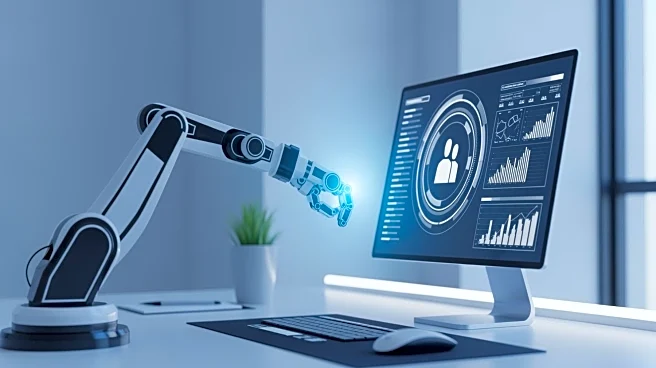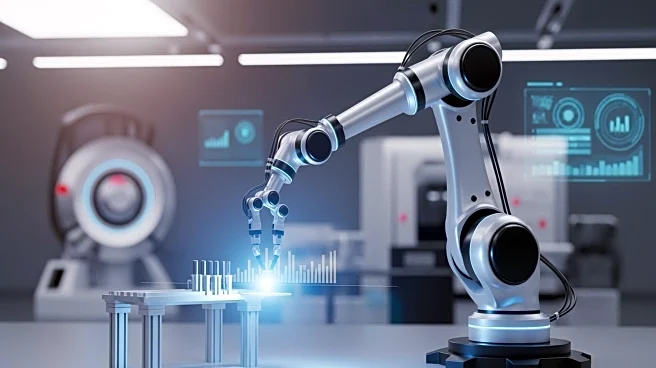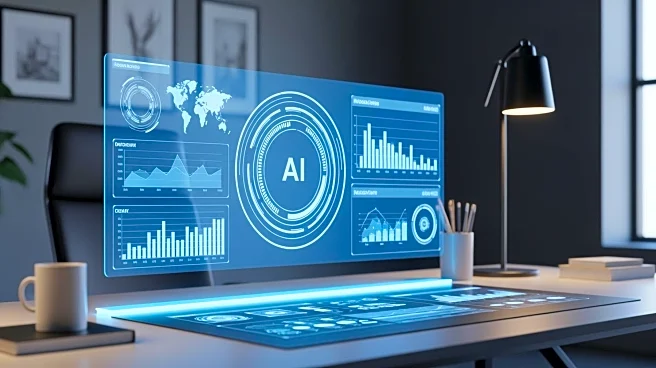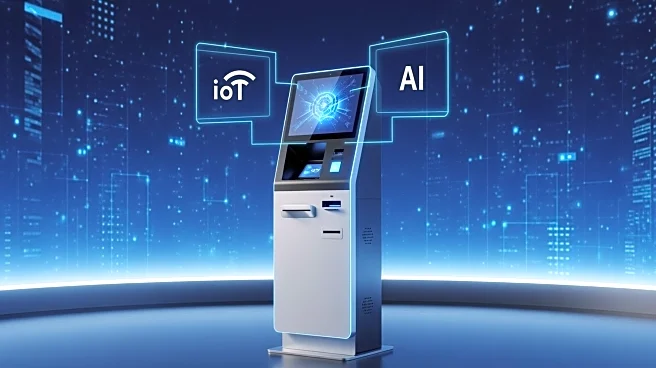What's Happening?
The AI-Driven Workforce Forecasting market is experiencing significant growth, with projections indicating an increase from $2.8 billion in 2025 to $8.5 billion by 2033. This growth is driven by the adoption of AI tools that predict future workforce needs,
allowing HR departments to plan and manage recruitment, training, and workforce development more effectively. The market is segmented by types such as predictive modeling and demand analytics, and applications including workforce planning and HR strategy. North America currently dominates the market, while the Asia Pacific region is the fastest-growing area.
Why It's Important?
The expansion of the AI-Driven Workforce Forecasting market is crucial for businesses aiming to optimize staffing and resource allocation. By leveraging AI, organizations can improve accuracy in predicting workforce demand, which enhances operational efficiency and reduces costs. This growth reflects a broader trend of integrating AI into business processes, which can lead to more strategic decision-making and competitive advantages. Companies that adopt these technologies stand to gain from improved productivity and retention rates, while those that lag may face challenges in maintaining workforce efficiency.
What's Next?
As the market continues to grow, businesses are likely to increase their investment in AI-driven tools to stay competitive. The integration of these tools with existing HR, payroll, and scheduling systems will be crucial for maximizing their benefits. Additionally, the demand for cloud-based solutions is expected to rise, supporting scalability and flexibility in workforce management. Companies may also explore new applications of AI in workforce forecasting, such as scenario modeling for strategic planning.
Beyond the Headlines
The rise of AI-driven workforce forecasting tools may lead to ethical considerations regarding data privacy and the impact of automation on employment. As businesses rely more on AI for decision-making, they must ensure transparency and fairness in their processes. Moreover, the shift towards AI-driven solutions could necessitate changes in workforce skills, with an increased focus on digital literacy and data analysis capabilities.













